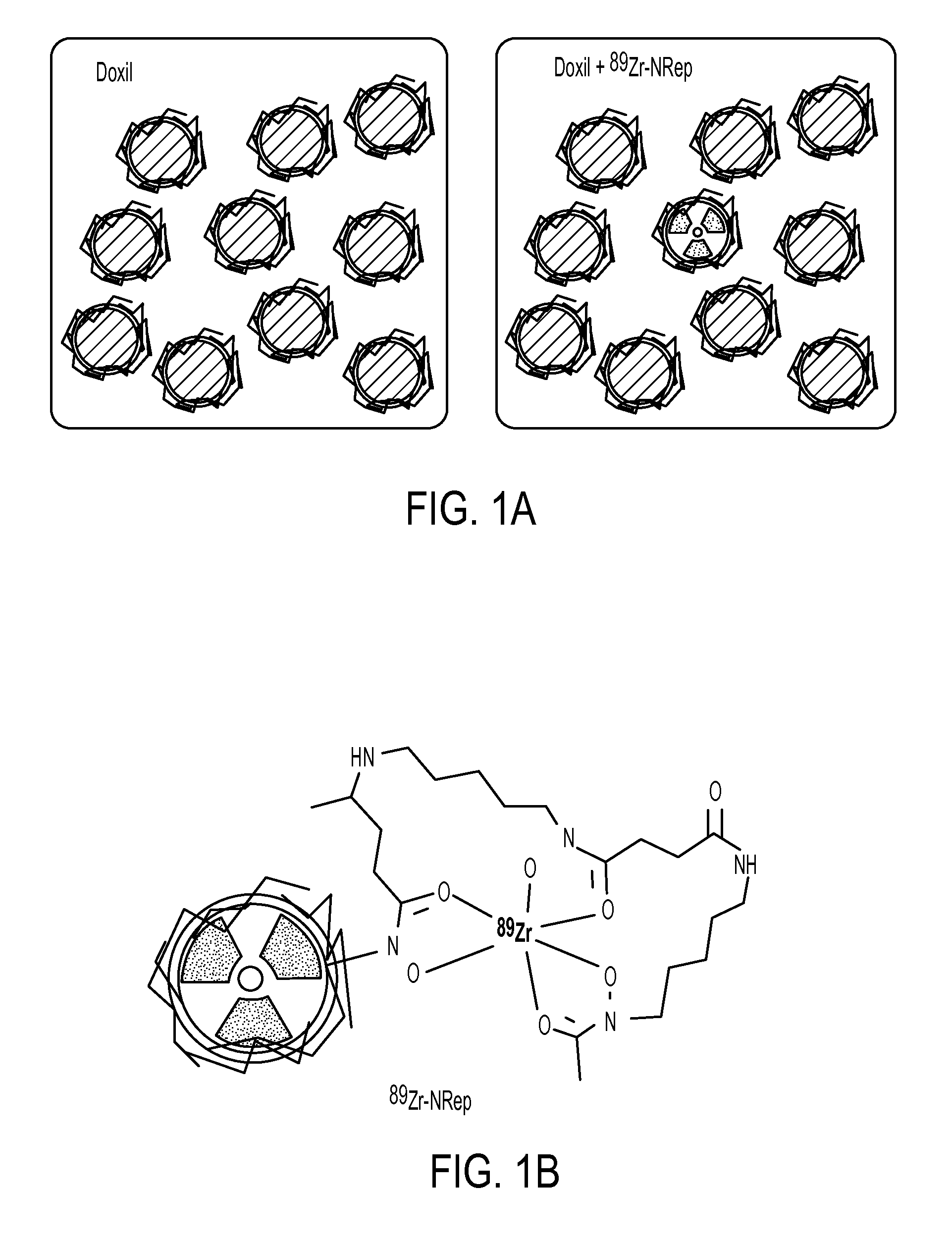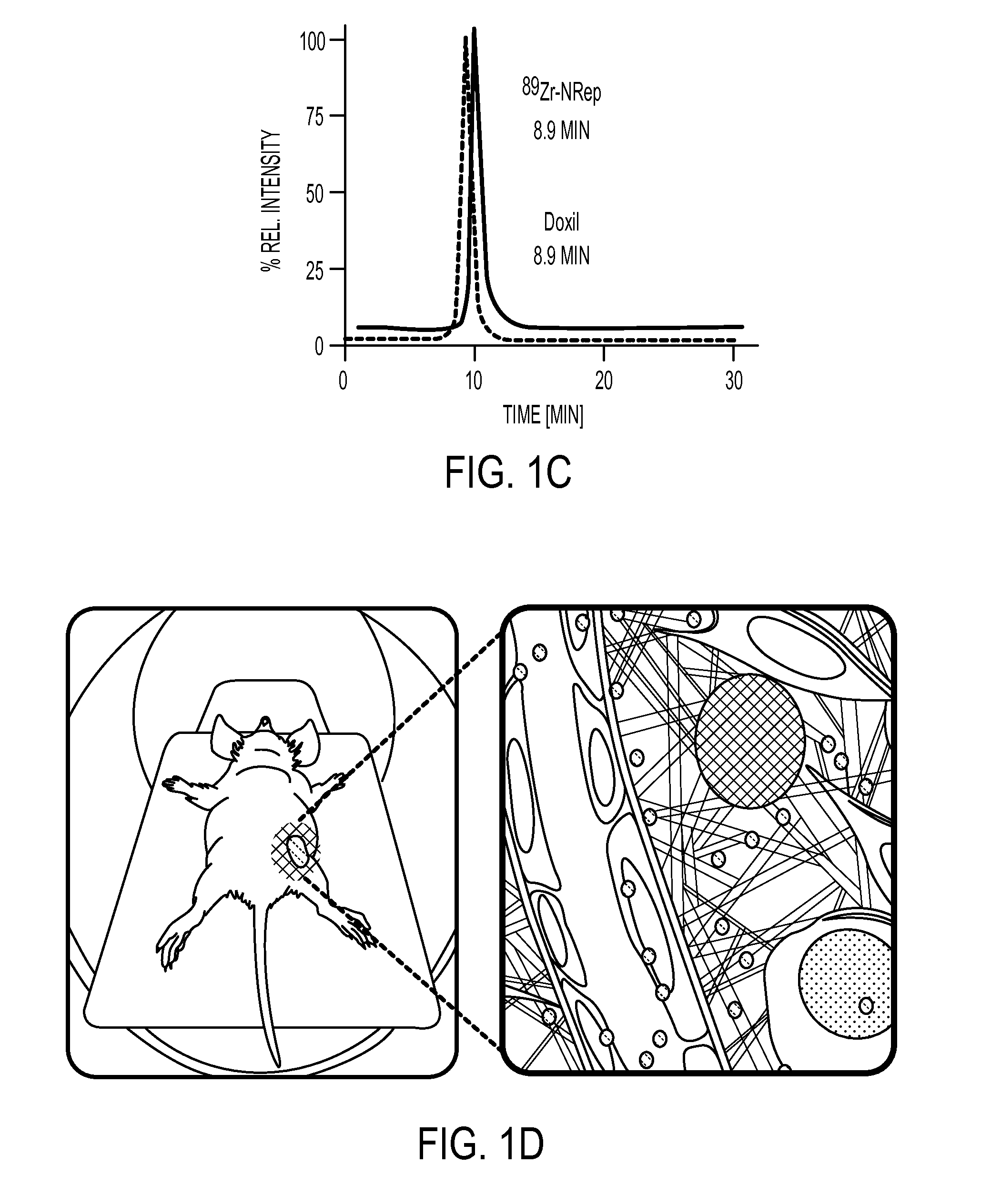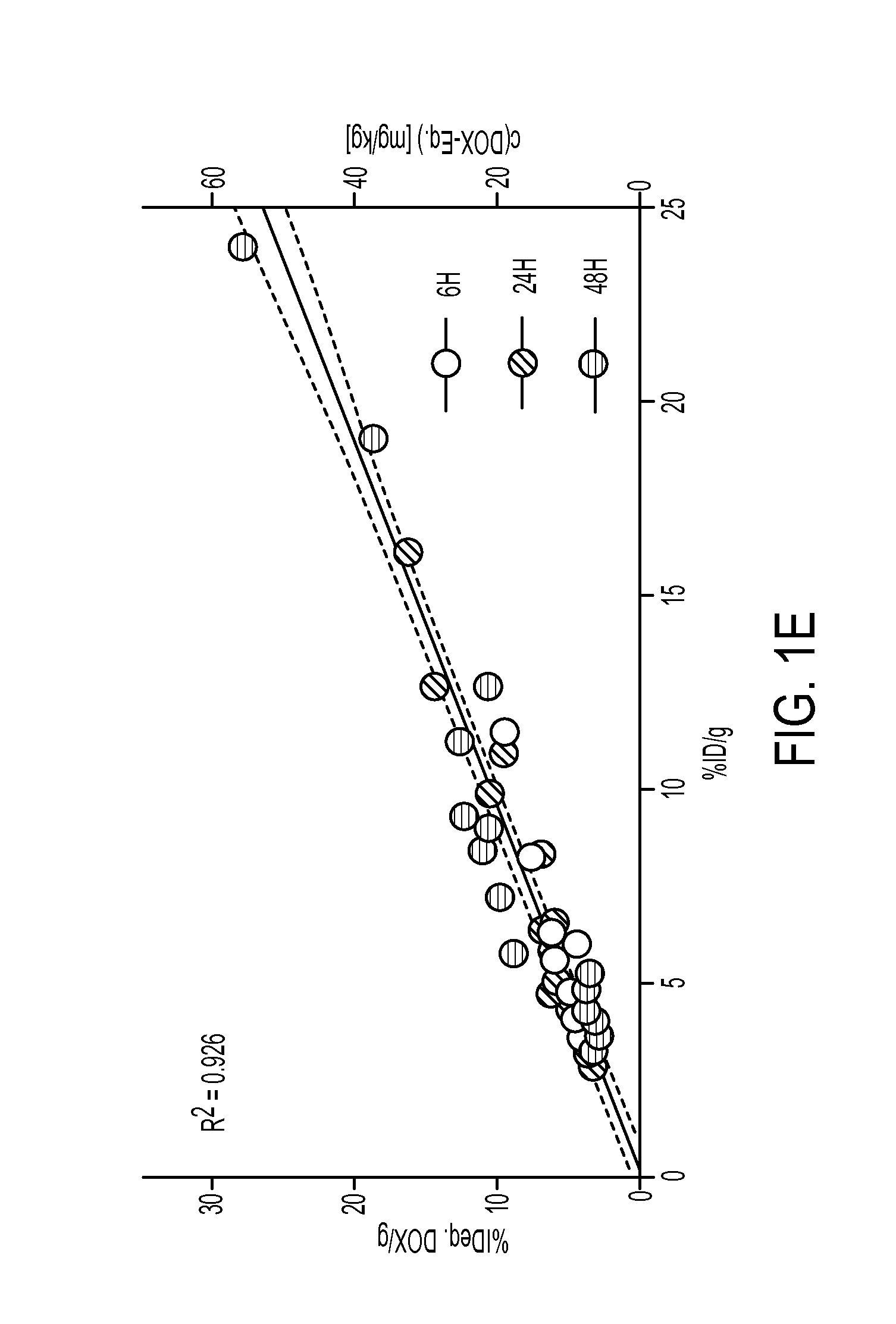Bimodal fluorophore-labeled liposomes and associated methods and systems
- Summary
- Abstract
- Description
- Claims
- Application Information
AI Technical Summary
Benefits of technology
Problems solved by technology
Method used
Image
Examples
experimental examples
Example 1
Exemplary Labeled Liposome Preparation
[0090]An exemplary labeled liposome was prepared as follows. A DFO-conjugated lipid was synthesized by reacting DFO-p-NCS and DSPE in DMSO / chloroform at 40 C for 3 days. Liposomes made of DPPC, cholesterol, DSPE-PEG2000 (1.85:1:0.15) and the conjugate DSPE-DFO (0.3 mol %) were prepared by the sonication method. The DFO-bearing liposomes were labeled by incubation with [89Zr]Zr(C2O4)2 in PBS at 40 C for 4 h and subsequent purification by spin filtration; preliminary biological evaluation was carried out on female NCr nude mice bearing 4T1 breast tumors.
[0091]DSPE-DFO was prepared in 85% yield and the sonication method afforded liposomes of 102.7±4.6 nm (PDI: 0.14±0.02, n=6). Radiolabeling was achieved in 80±10% yield (n=7) and radiochemical purity was >99%. The size of the radiolabeled liposomes was measured to be 108.5±4.6 nm (PDI: 0.15±0.02, n=6). The labeled liposomes were demonstrated to be long-circulating, and biodistribution studi...
example 2
Doxil Nanoreporter 89Zr-NRep
[0092]The Doxil nanoreporter 89Zr-NRep (FIG. 1A) comprises a pegylated liposome labeled with 89Zr through a desferrioxamine B (DFO) functionalized phospholipid (FIG. 1B). The size exclusion chromatography retention time of 89Zr-NRep is identical to Doxil (FIG. 1C), and as per dynamic light scattering size measurements, its size and Zeta potential, 100 nm and −20 mV respectively, were very similar to Doxil's (Table 1). Table 1 shows lipid composition (in mol %), size (as mean effective diameter, MED) polydispersity index (PDI) and Z-potential of the different liposomes used.
TABLE 1Choles-DSPE-DSPE-Z-Potential / DPPC*terolPEG 2000DFOMED / nmPDImVDoxil53425— 82.4 ± 0.20.05 ± 0.01−31.1 ± 11.9 Plain61.633.45—103.9 ± 0.70.11 ± 0.02−23.7 ± 4.7 89Zr-NRep61.333.450.3113.8 ± 3.10.15 ± 0.02−26.1 ± 8.9***HSPC (hydrogenated soy phosphatidylcholine) for Doxil.**Unlabeled.
[0093]Using a well-established mouse breast cancer model, it was tested whether 89Zr-NRep's tumor radio...
example 3
Discussion of Example 3
[0141]The size of all liposomes was larger than the renal clearance threshold. The overall negative charge of the particles helps to stabilize them in vivo, reducing the tendency to aggregate and avoiding electrostatic interactions with the luminal wall of blood vessels. Moreover, the presence of polyethylene glycol chains on the surface of the particles efficiently helps to prevent opsonization and their subsequent removal from circulation.
[0142]Compared to the bioorthogonal labeling, direct surface chelation proved to be quicker and more efficient, but neither strategy had a significant effect on the size distribution of the samples when compared to their precursor liposomes. Although both probes had a similar size, the clearance rates of radioactivity from blood were significantly different. After 24 h, 7.1% ID / g was remaining in the blood pool for 89Zr-SCL whereas the activity for 89Zr-CLL had dropped to 1.5% ID / g.
[0143]Circulation time is a critical facto...
PUM
 Login to View More
Login to View More Abstract
Description
Claims
Application Information
 Login to View More
Login to View More - R&D
- Intellectual Property
- Life Sciences
- Materials
- Tech Scout
- Unparalleled Data Quality
- Higher Quality Content
- 60% Fewer Hallucinations
Browse by: Latest US Patents, China's latest patents, Technical Efficacy Thesaurus, Application Domain, Technology Topic, Popular Technical Reports.
© 2025 PatSnap. All rights reserved.Legal|Privacy policy|Modern Slavery Act Transparency Statement|Sitemap|About US| Contact US: help@patsnap.com



